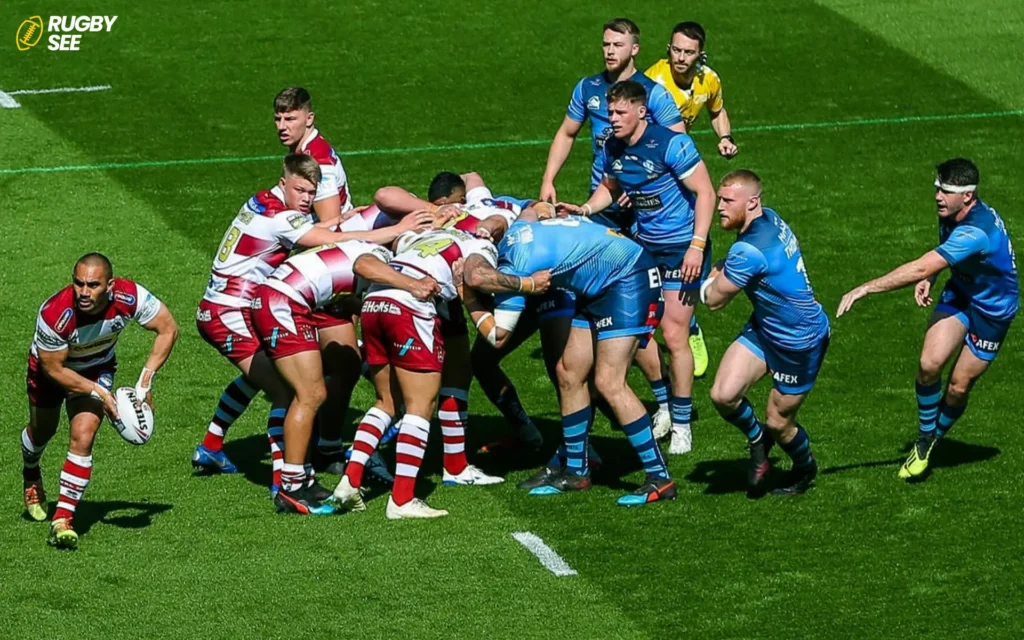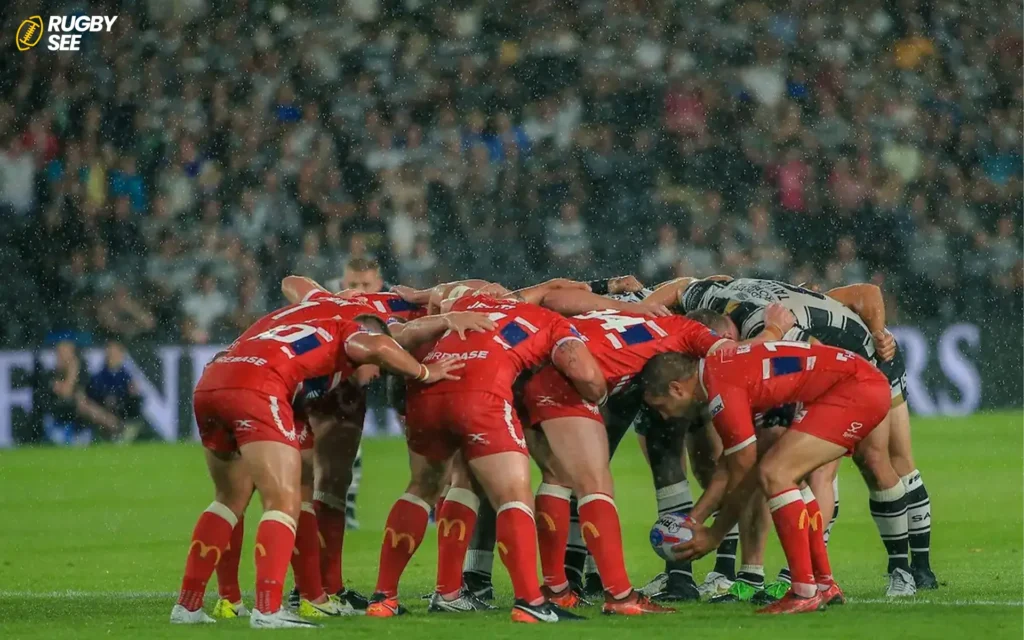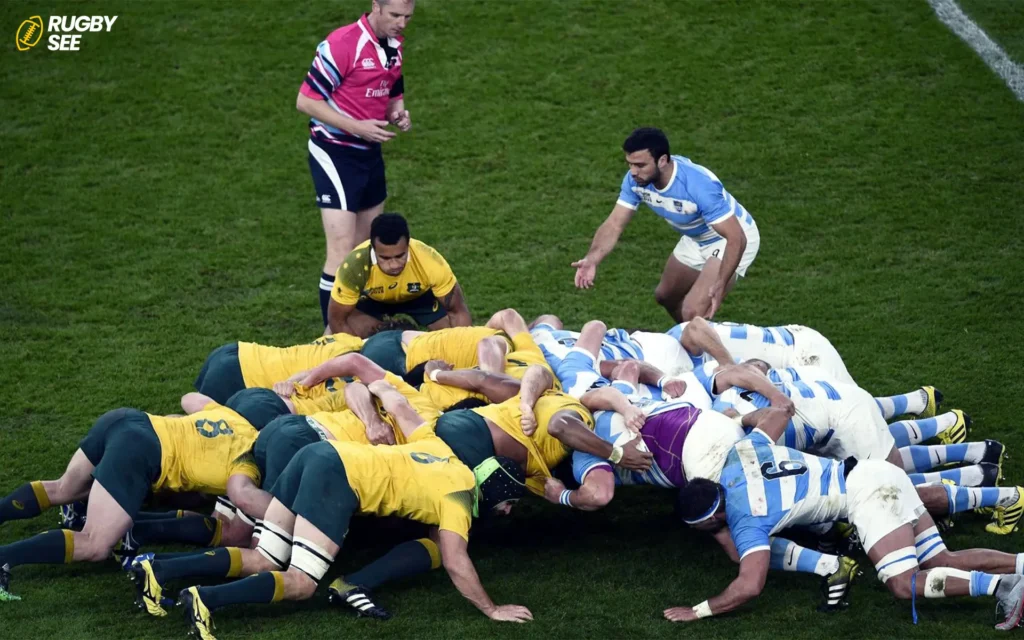In the dynamic world of rugby, where the clash of titans is not just a spectacle but a celebration of strength, strategy, and spirit, two codes stand out: Rugby Union and Rugby League. While both share common roots, their paths diverge in rules, gameplay, and traditions. One frequently asked question by fans and newcomers alike is: Are there scrums in rugby league? This article delves into the role of scrums in Rugby League, offering insights into how they differ from their Rugby Union counterparts and their significance in the game.
Understanding Rugby League
Rugby League is a fast-paced, hard-hitting game known for its straightforward rules and thrilling action. Originating as a split from Rugby Union in the late 19th century, it has developed its own identity, with distinct rules that cater to a more fluid and dynamic game.
Key Features of Rugby League
- Team Composition: Teams consist of 13 players, reducing the number of forwards to create more open play.
- Tackles: A key difference is the “six tackle” rule, which limits the number of tackles a team can have before turning over the ball.
The Role of Scrums in Rugby League
Yes, scrums do exist in Rugby League, but not in the way they are prominently featured in Rugby Union. Scrums in Rugby League serve a different purpose and are executed with distinct rules.
The Evolution of Scrums in Rugby League
Historically, scrums in Rugby League played a more significant role, similar to Rugby Union. However, over the years, the game has evolved, and the importance and frequency of scrums have decreased, reflecting Rugby League’s emphasis on speed and continuity.

How Scrums Work in Rugby League
- Formation: Scrums are formed with six forwards, three from each team, binding together.
- Occurrence: They occur less frequently than in Rugby Union, typically after a forward pass, knock-on, or accidental offside.
- Function: The primary function of scrums in Rugby League is to restart play rather than contest possession aggressively as in Rugby Union.
Comparing Rugby League and Rugby Union Scrums
To understand the unique nature of Rugby League scrums, a comparison with Rugby Union scrums is essential.
Rugby Union Scrums
- Contested: Scrums are a critical contest for possession, with eight players from each team engaging in a push for the ball.
- Technical and Strategic: They involve complex binding and positioning, playing a significant role in the game’s strategy.
Rugby League Scrums
- Uncontested Possession: The ball is fed into the scrum by the team awarded the scrum, with a higher likelihood of retaining possession.
- Simplified: The focus is on restarting play quickly, reflecting Rugby League’s fast-paced nature.
The Significance of Scrums in Today’s Rugby League
While scrums in Rugby League may not hold the same strategic depth as in Rugby Union, they are still an integral part of the game, facilitating a reset in play and offering teams a chance to regroup and launch strategic plays.

Strategic Opportunities
Despite the reduced emphasis on physical contestation in scrums, teams can still exploit this moment for tactical advantage, using the space created by scrums to execute planned moves.
The Future of Scrums in Rugby League
The nature of scrums in Rugby League continues to evolve, with ongoing discussions among officials, coaches, and fans about their role and implementation. Innovations and rule changes reflect the sport’s dynamic nature, ensuring it remains engaging and relevant for future generations.
The Tactical Dimension of Rugby League Scrums
Despite the perception that scrums in Rugby League have been simplified to mere formalities, they still possess a tactical dimension. Coaches and players often craft specific plays to exploit the moments immediately following a scrum, utilizing the space and positioning of the opposing team to launch attacks. This strategic use of scrums can lead to unexpected shifts in the game’s momentum, highlighting the ingenuity embedded in Rugby League’s gameplay.
Player Skills and Scrums
The skills required by forwards in a Rugby League scrum, while not as physically demanding in terms of pushing as in Rugby Union, still include coordination, timing, and the ability to quickly transition from a scrum to open play. This versatility underlines the athleticism and adaptability of Rugby League players, contributing to the sport’s dynamic nature.

The Fan Perspective on Scrums
From a spectator’s viewpoint, scrums in Rugby League add a layer of anticipation and excitement. They provide a brief pause in the game’s flow, a moment where fans can speculate on the next move and see how teams adapt their strategies in real-time. This interaction enhances the viewing experience, making scrums a unique feature of Rugby League that fans look forward to.
Potential Evolution of Scrums
The rugby world is no stranger to change, and Rugby League scrums are no exception. Discussions within the sport’s governing bodies often touch on how to maintain the game’s pace while ensuring scrums retain their strategic value. Potential future adjustments could include modifications to the rules governing scrum formations or the introduction of new strategies to make them more competitive, ensuring that scrums remain a vital and engaging part of Rugby League.
The Role of Technology and Analysis
Advancements in technology and game analysis also play a crucial role in evolving the tactical use of scrums. Coaches and analysts study scrum setups and outcomes to devise new strategies, while technology, like GPS and motion tracking, provides insights into the effectiveness of scrum-related plays. This data-driven approach could influence future trends in how scrums are utilized in Rugby League.
Conclusion: Celebrating the Strategic Complexity of Rugby League
Scrums in Rugby League, while seemingly straightforward, encapsulate the sport’s essence: a blend of speed, strategy, and spectacle. They offer a unique strategic component, contrasting with Rugby Union’s approach, and contribute to Rugby League’s identity as a fast-paced, fan-friendly sport. As Rugby League continues to evolve, so too will the role and execution of scrums, potentially offering new dimensions to this beloved game.
Rugby League fans, players, and coaches alike appreciate the nuances of scrums, recognizing them as moments where games can be subtly influenced. Whether through immediate tactical plays or the strategic positioning they afford, scrums remain a critical, if understated, element of Rugby League’s rich tactical tapestry.
As the sport looks to the future, the ongoing dialogue around scrums—how they’re conducted, their role in the game, and potential changes to their implementation—will undoubtedly continue. This conversation reflects the vibrant and dynamic nature of Rugby League, a sport always seeking the perfect balance between tradition and innovation, speed and strategy, challenge and entertainment.










